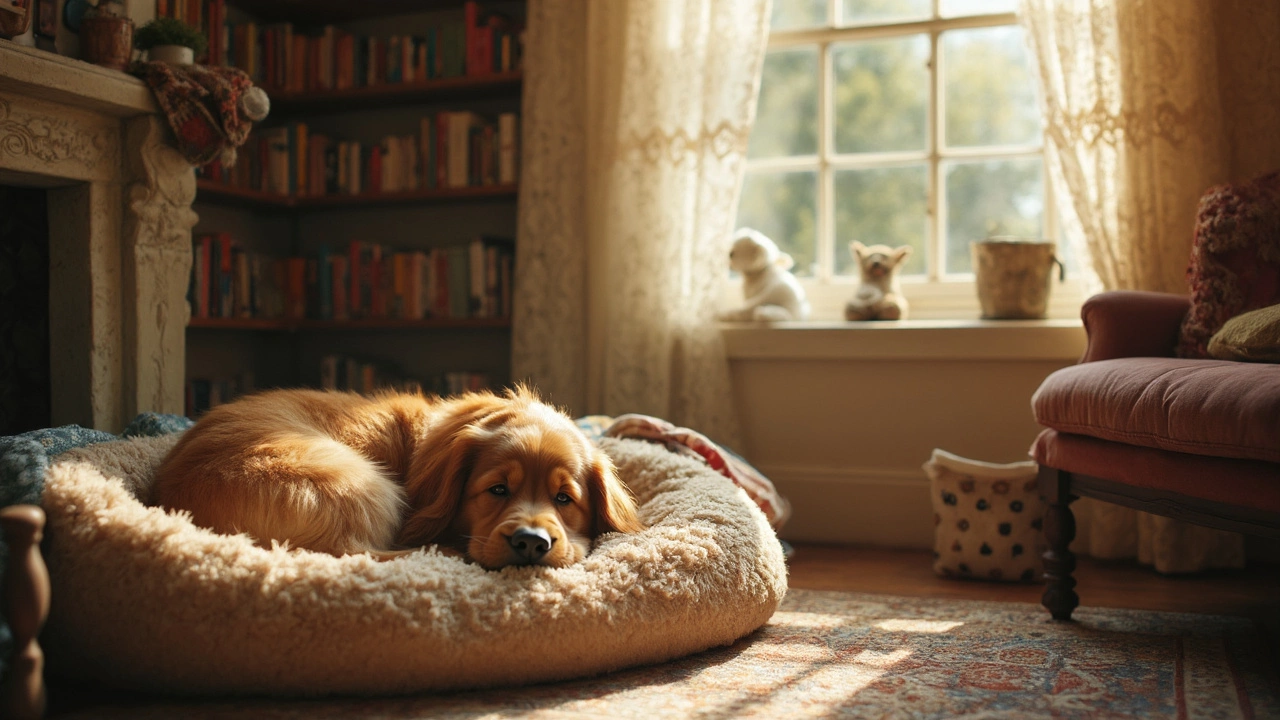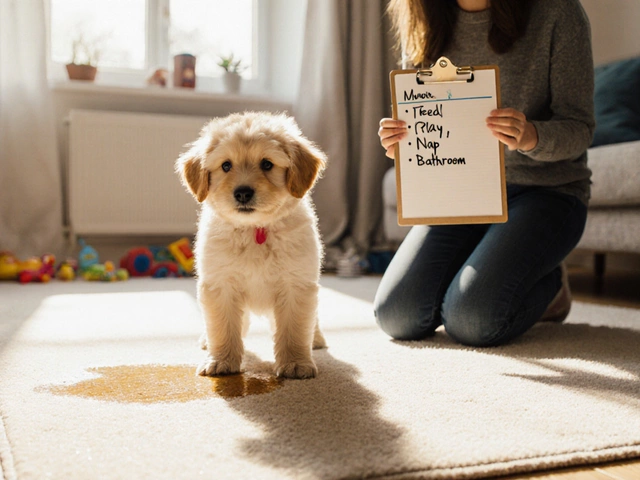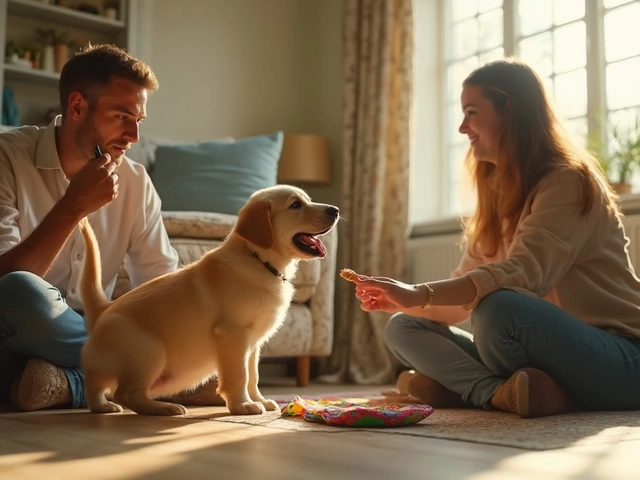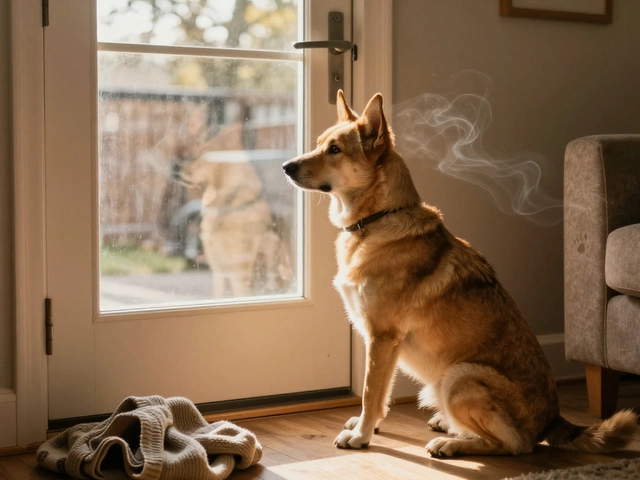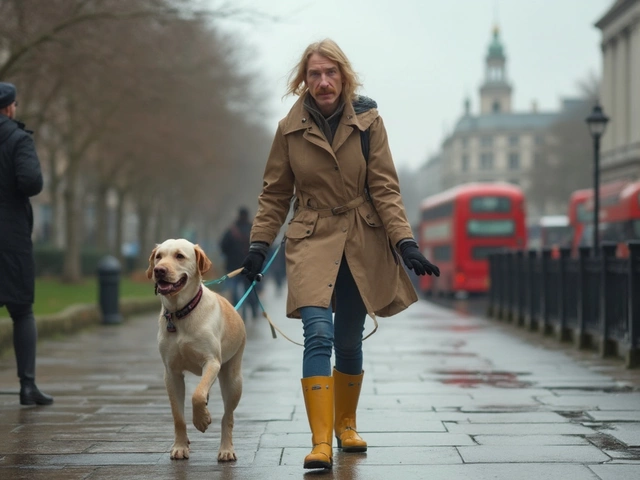Have you ever caught yourself wondering if your dog prefers a little 'me time' when it's time to catch some Zs? You're not alone! Many dog owners ponder whether their furry companions like sleeping solo or cuddling up with their humans at night. Let's dive into this curious world of canine snoozing habits.
Understanding what makes your pup tick in this department can help foster a happier, more relaxed pet. It's key to look at their natural instincts, breed tendencies, and individual personality. While some dogs cherish their solo time, others might feel safer and more secure snuggled beside you. How can you tell which it is for your dog?
- Understanding Dog Sleeping Habits
- Factors Influencing Where Dogs Sleep
- Benefits of Sleeping Alone
- Creating the Perfect Sleep Space
Understanding Dog Sleeping Habits
Ever wondered why your dog spins around in circles before settling down for the night? Dogs have some quirky bedtime rituals, and most have deep roots in their biological makeup. Knowing a bit about these habits can really help you set up the perfect cozy spot for them to snooze.
Instincts at Play
Much like their wild ancestors, domesticated dogs often exhibit behaviors handed down through generations. This includes circling to flatten grass or sniffing for lurking predators before lying down. Naturally, our fluffy friends don't worry about predators inside our homes, but the instinct remains.
Different Breeds, Different Habits
Just like people, dogs have unique personalities, and their breed can shape those sleeping patterns. Smaller breeds, like Chihuahuas, often relish cuddling up with their human to feel extra warm and safe, while larger breeds might enjoy sprawling out alone as they nap. That's not carved in stone, though. Sometimes it depends on their mood!
Interestingly, dog beds often need to accommodate these breed differences, offering warmth for those who shiver or lots of space for those who stretch out. So, knowing your space needs can inform whether your pup's bed is the right fit.
Life for Modern Dogs
Things have changed since the days of wild packs, and modern dogs lead very different lives now. They may have learned how to doze in the car, nap with the TV on, or enjoy sleeping alongside other pets. These environmental factors can change everything, but a keen eye can usually spot what makes your dog happiest.
Surprisingly, a recent study found that dogs might sleep up to 12-14 hours in a 24-hour period, just in shorter stretches. Sometimes, a simple dog bed that fulfills specific needs (think: joint support, warmth, or cooling) can be the ticket to restful puppy sleep.
Factors Influencing Where Dogs Sleep
Ever noticed how dogs can be just as picky as humans when it comes to their beds? There are several factors that decide if your dog prefers sprawling on their dog bed or snuggling close to you. Understanding these can really make a difference in fostering a cozy sleep routine for your pup.
Instincts and Ancestry
Dogs are descended from wild ancestors who slept in dens for warmth and safety. That ancestral instinct still lives on for many breeds. Some dogs feel best when they're curled up in a nice, enclosed space. It's why crate training can be so effective for certain dogs.
Breed Characteristics
Believe it or not, some breeds are more inclined to seek companionship during sleep. A breed like the Greyhound, known for being independent, might like its dog bed in a separate room. Meanwhile, a Velcro dog like a Cavalier King Charles Spaniel will probably want to be right next to you. Knowing a breed’s traits can help in making the right sleeping arrangements.
Age and Health
Puppies often like being close for security, but as they grow, their preferences might change. Older dogs might seek warmth for achy joints. Additionally, a dog recovering from illness or surgery might need extra comfort or a special type of mattress.
Training and Habits
Just like us, dogs are creatures of habit. If they've been trained early on to sleep in a specific spot, they often stick to it. Consistency in where they sleep can be reassuring, so whatever habit you decide to form, stick with it!
Household Dynamics
The dynamics in your home can play a massive role too. A household bustling with kids might have a pup looking for a quiet corner. Conversely, a laid-back house may encourage a pup to stay close for all the human interaction.
Ultimately, the best approach is to consider all these elements and observe your dog's behavior. Over time, you'll get the hang of where your furry friend is most comfortable catching those Zs!
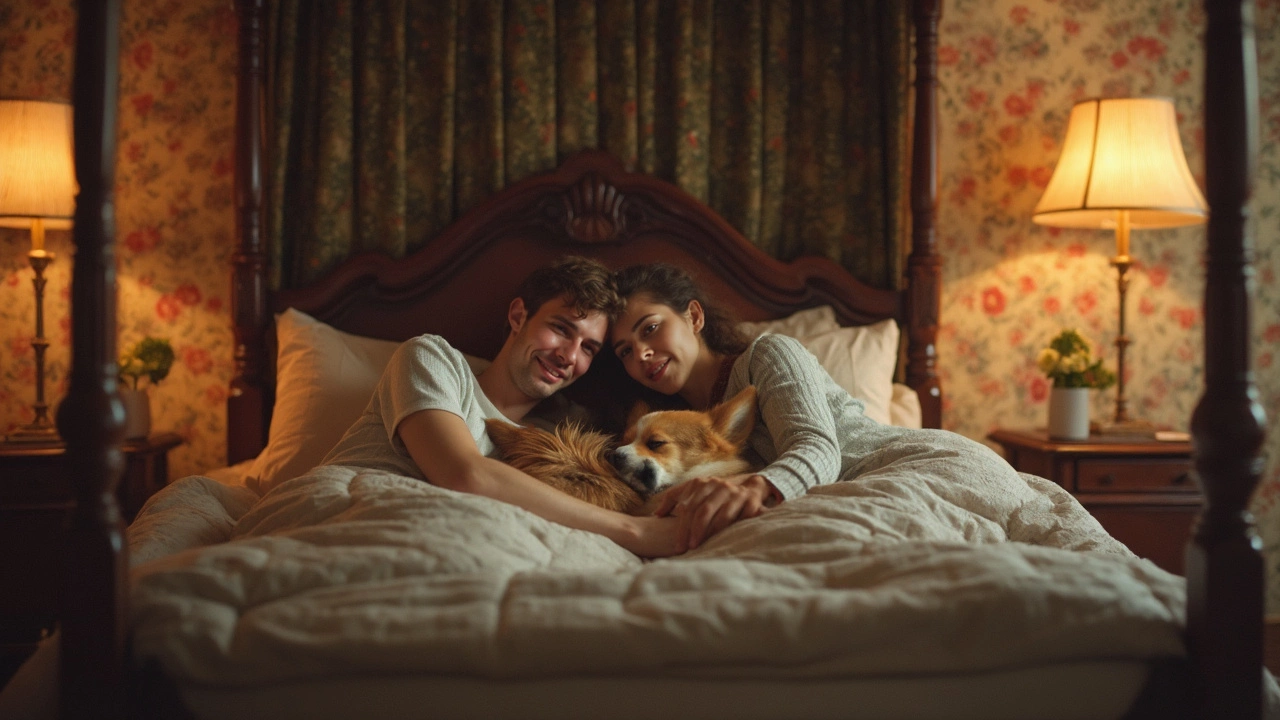
Benefits of Sleeping Alone
So you're wondering why some dogs might choose to sleep alone? It's not that they're snubbing you! There are solid reasons why a little solo snooze time can be a good thing for our canine pals.
Comfort and Autonomy
Dogs have an innate sense of personal space, much like us. A dog bed allows them their own realm without any disturbances. This autonomy can help reduce stress and make them feel more relaxed.
Improved Sleep Quality
If your pup's tossing and turning at night, you might unknowingly be the cause. Sleeping alone lets dogs enjoy uninterrupted rest. After all, they sleep around 12-14 hours a day and quality sleep is just as crucial for them!
Better Temperature Regulation
Sometimes, sharing a bed can make it too warm for comfort. When dogs sleep by themselves, they can adjust their position in their dog beds to suit their temperature preferences, whether that means curling up to stay warm or sprawling out to cool off.
- Less Behavioral Issues: A well-rested dog is generally more well-behaved. They tend to show less aggression and anxiety, which can build up if they don't get their proper sleep.
- Hygiene: Solo sleeping arrangements can also help in maintaining hygiene, both for the dogs and their owners. Fleas, dirt, or dog hair, for example, can stay confined to one area.
Overall, allowing your dog their own sleeping space isn't about keeping your distance, but ensuring a happy, healthy pet!
Creating the Perfect Sleep Space
Making sure your dog has a cozy spot to rest their paws isn't just about picking a bed. It's about crafting a whole environment that says, 'You're safe and loved here.' So, how do we create that perfect nest?
Choose the Right Bed
The first step is finding the right dog bed for your fur buddy. Dogs come in all shapes and sizes, and their beds should, too! Whether it's a plush pillow or a structured bolster bed, ensure it's big enough for your dog to stretch out and supports their back and joints. If you have a small dog, an elevated edge might make them feel secure. Meanwhile, larger dogs might prefer a spacious, cushioned surface.
Location, Location, Location
Once you have the perfect bed, think about where to place it. Dogs love being part of the action but also relish some downtime. Consider a spot away from foot traffic but not completely isolated. A corner in the living room might be just the right balance for your puppy to relax yet still feel like part of the family.
Environmental Comfort
Temperature is key for snooze success. Dogs don't like being too hot or too cold. Keep the area well-ventilated, especially in warmer months, and ensure there's a draft-free zone in winter. If your dogs love a cooler surface, consider a cooling mat to keep their temp just right.
Personal Touches
Add some personal touches to make it feel like home. Toss in a favorite blanket with a familiar smell or their cherished chew toy. Familiar scents have a comforting effect, helping dogs settle and sleep soundly.
Using Sound for Comfort
Just like some of us can't nod off without a bit of white noise, dogs might benefit from soft music or calming background sounds. It can be particularly comforting during stormy nights or when they're home alone.
Consistency is Key
Lastly, keep a consistent bedtime routine. It helps your dog know when it's time to wind down. Whether it's a short evening walk or a quick grooming session, these cues signal it's time for beddy-bye.
